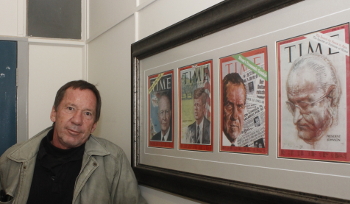Latest News Archive
Please select Category, Year, and then Month to display items
17 October 2024
|
Story Precious Shamase
|
Photo Supplied
 Sibahle Mabaso during her BA (Hons) Drama and Theatre Arts (2022) graduation, which she passed cum laude.
Sibahle Mabaso during her BA (Hons) Drama and Theatre Arts (2022) graduation, which she passed cum laude.
Sibahle Mabaso, a talented and driven individual, has been making waves at the University of the Free State (UFS). As a runner-up in the prestigious Siyaphumelela ATD DREAM Scholar programme, Mabaso's dedication and achievements have not gone unnoticed.
A multi-faceted student, Mabaso excelled in both her academic pursuits and extracurricular activities. A graduate of the UFS Drama and Theatre Arts programme, Mabaso's academic pursuits have been as diverse as her interests. She has a BA in Drama and Theatre Arts (2019-2021), a BA Honours in Drama and Theatre Arts (2022), and she is currently pursuing a Master of Arts with specialisation in Gender Studies. Her passion for the arts is evident in her work as a playwright, director, and educator. Mabaso is currently an Assistant Researcher in Transition, Development and Success within the Centre for Teaching and Learning.
Mabaso's journey to academic success has been marked by resilience and perseverance. Despite facing challenges, she has overcome obstacles through hard work, determination, and the support of mentors.
Beyond her academic achievements, Mabaso is committed to giving back to her community. She recently founded a creative enterprise called Wild Geese PTY LTD, which aims to provide opportunities for young creatives. Through her work, Mabaso hopes to inspire and mentor others, sharing her experiences and knowledge to help them reach their full potential.
As Mabaso continues her academic journey and pursues her career goals, her dedication and passion for both her studies and community engagement are sure to inspire others. Her achievements serve as a testament to the power of hard work, resilience, and a commitment to making a positive impact. Looking ahead, Mabaso hopes to continue her academic pursuits and pursue a career in higher education. She is also passionate about giving back to her community and mentoring young people. With her talent, dedication, and unwavering spirit, there is no doubt that Sibahle Mabaso will continue to achieve great things.
Photo manipulation in journalism: evil, crutch or lifebuoy?
2017-09-04

Albe Grobbelaar, veteran journalist and lecturer in the
Department of Communication Science at the UFS.
Photo: Rulanzen Martin
Since the 1800s the manipulation of photographs has been common practice, and who can forget the OJ Simpson Time magazine cover in 1994? Albe Grobbelaar, lecturer in the Department of Communication Science at the University of the Free State (UFS), asked in a special lecture on 18 August 2017 whether “Photo manipulation in Journalism” was an evil habit, a crutch or a lifebuoy.
“As a journalist I have always been interested in photography. And the principle of photo manipulation or tampering with photos, as we call it, is something that has interested me ever since,” Grobbelaar said. Photo manipulation is an area that has garnered many academic interest and is not a new trend but a practice that started in the 1830s when photos came into popular use. “It is not always done with ulterior motives, artists played with photographs to get unique effects.” Photo manipulation is not only to create fake news, but is sometimes used to convey novelty and create shock to news readers.
Different viewpoints for different circumstances
He talked about the spectrum of viewpoints on photo manipulation. Some conservative journalism schools say photos should never be retouched while other feel it is fine to tamper with pictures. “What I tried to convey in the lecture was that one should consider different circumstances differently,” Grobbelaar said. As a journalist he believes that news photos should never be manipulated.
He mentioned the example of the mugshot of OJ Simpson that the Los Angeles Police Department released to the media. “Newsweek and Time both used the photo on their front pages, but Time deliberately darkened the picture so that OJ, a black man, would appear more sinister,” Grobbelaar said. It is, however, common practice in the fashion industry to retouch images that are used in fashion magazines.
Use own judgment to validate photos
In the age of social media it has become easy to manipulate photos and which has been labelled fake news. “I would advise people to use their own judgment when validating the authenticity of photos,” Grobbelaar said. It is important to verify whether they are from a reliable news outlet.